Overview
Launching a successful wine business from home requires a comprehensive understanding of the wine industry landscape. It begins with:
- Establishing a robust business framework
- Selecting an appropriate production method
- Developing a compelling brand and marketing strategy
- Setting up effective sales channels and logistics
This article delineates these essential steps, underscoring the necessity of adapting to evolving market trends, such as the increasing demand for organic products and the shift towards direct-to-consumer sales. By offering actionable insights on:
- Legal structures
- Innovative marketing approaches
- Operational strategies
it aims to enhance growth and foster customer retention in a competitive market.
Introduction
The wine industry is experiencing a transformative shift, as new consumer preferences and evolving market dynamics reshape the landscape for aspiring entrepreneurs. For those eager to launch a wine business from home, grasping these changes is essential for crafting a successful venture. This guide presents a comprehensive roadmap, outlining critical steps from establishing a robust business framework to developing a compelling brand and marketing strategy. Yet, with the market becoming increasingly competitive, how can new entrants effectively navigate these challenges and distinguish themselves in a crowded space?
Understand the Wine Industry Landscape
To embark on your beverage business journey, it is imperative to comprehend the . The shift towards direct-to-consumer (DTC) sales is reshaping how wineries engage with clients, underscored by a notable 2.1% decline in total DTC sales across the U.S. in 2023. This statistic highlights the urgent need for innovative strategies.
Concurrently, the appetite for organic and sustainable beverages is on the rise, reflecting a growing consumer preference for environmentally friendly products. Grasping your target audience—especially the demographic transition from Baby Boomers to younger consumers—will be vital in refining your offerings.
Enocap's proficiency in establishing sustainable DTC channels and strategic capital planning equips wineries to navigate these shifts, converting casual buyers into dedicated club members and securing long-term growth.
Moreover, analyzing successful wineries that have adeptly adjusted to these market trends can provide invaluable insights into effective strategies.
Leverage industry reports, beverage trade publications, and online forums to collect pertinent information, as this foundational knowledge will be crucial in informing your business planning and development.
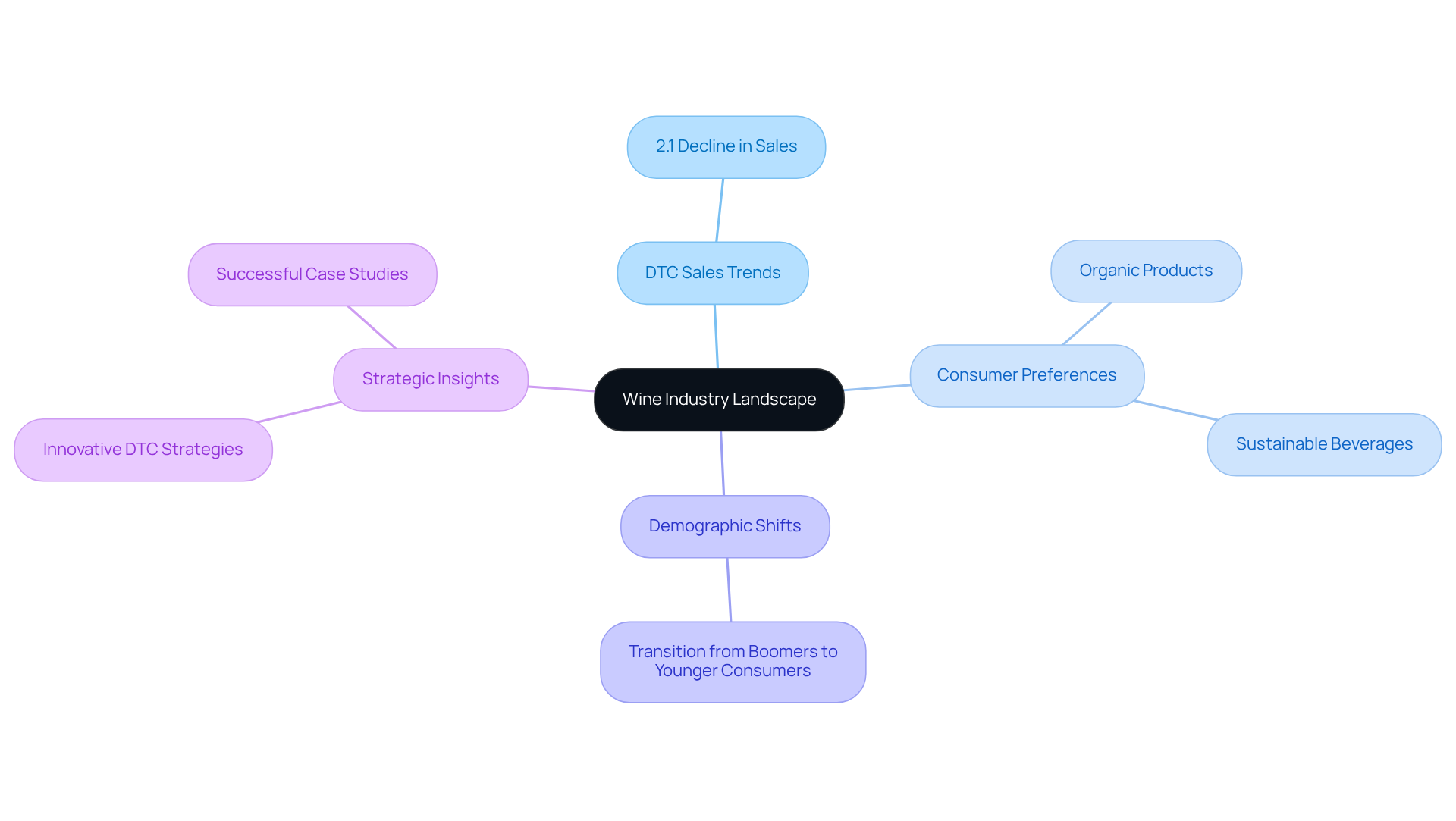
Establish Your Business Framework
Begin by defining your business model, which is essential when learning how to start a wine business from home: will you create your own wine or source it from established vineyards? This foundational choice will significantly .
Next, select a legal structure for your business—options include:
- Sole proprietorship
- Partnership
- Limited liability company (LLC)
This decision is crucial as it affects your tax obligations, liability exposure, and operational flexibility. Once your structure is determined, register your business and secure any necessary licenses and permits, which can vary significantly based on your location.
Furthermore, create an operational framework that encompasses production methods, quality control measures, and distribution plans, which will be essential for understanding how to start a wine business from home.
It's important to recognize that starting a vineyard typically requires over five years before seeing a profit, and many vineyard owners maintain another source of revenue during this period.
Moreover, understanding how to start a wine business from home involves establishing a name, label, and business entity, which is vital for your beverage enterprise.
Enocap provides extensive advisory services, including demand generation strategies and club optimization, to assist you in navigating these foundational steps, driving DTC growth and enhancing your brand narrative. This approach will streamline your business processes and provide a solid foundation for growth as you address cash flow challenges and connect with your most passionate customers.
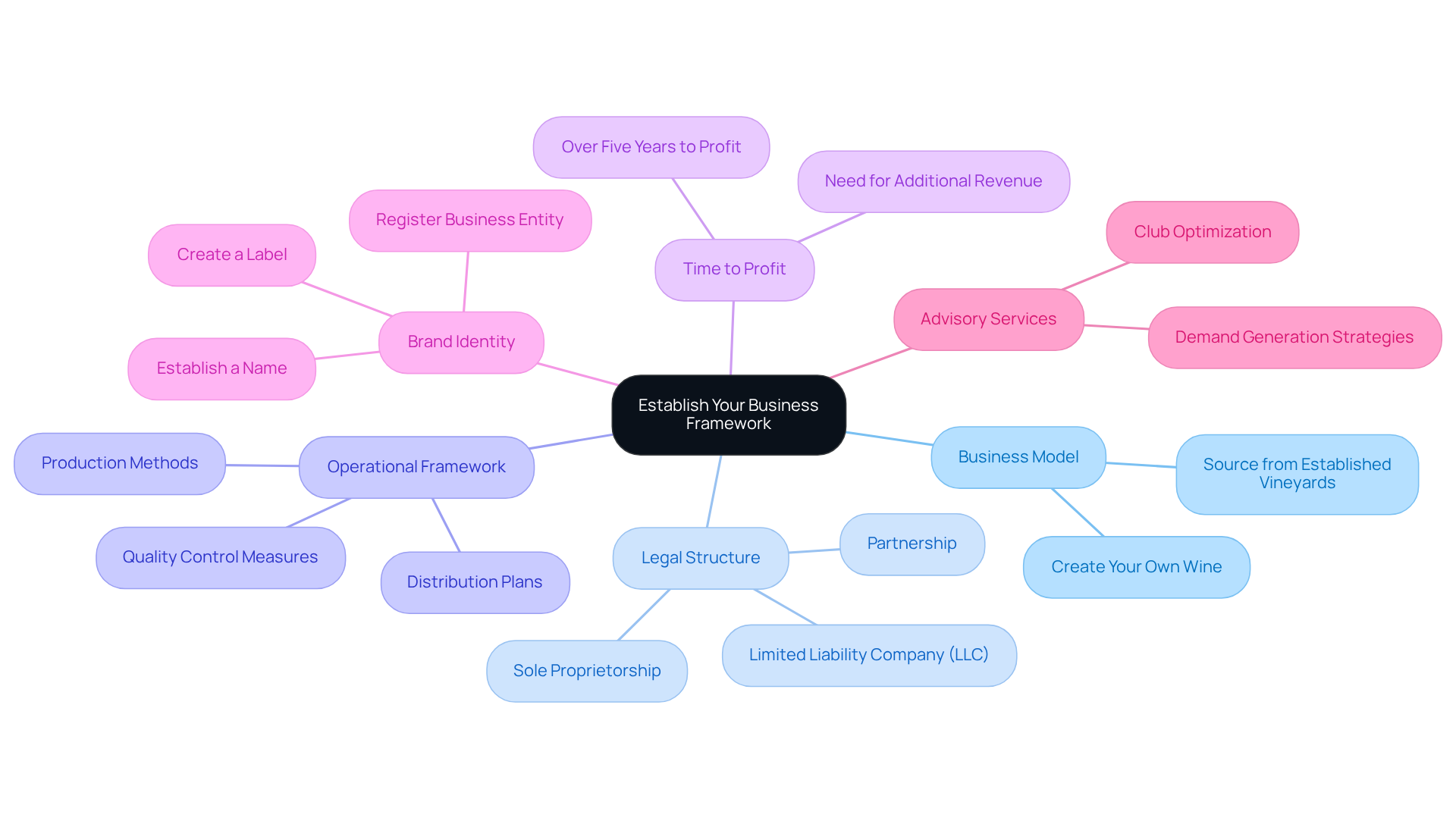
Choose Your Wine Production Method
When selecting a beverage production method, it is crucial to explore various approaches, including:
- How to start a wine business from home
- Traditional fermentation
- Natural winemaking
- Modern technological methods
Notably, organic and biodynamic varieties are gaining traction among health-conscious consumers, reflecting a substantial shift in market preferences. The organic beverage market is experiencing rapid growth, with a projected annual growth rate of approximately 12% from 2023 to 2027, signaling robust demand for these products.
Successful instances of organic and biodynamic viniculture illustrate the potential for profitability and consumer loyalty. Vineyards adopting these practices often report enhanced brand narratives and stronger connections with their patrons, as consumers are drawn to the environmental and associated with organic beverages. Significantly, 27% of new wine club registrations now originate from digital channels, underscoring the effectiveness of online engagement methods in promoting organic offerings.
As you assess your resources—such as equipment, grape varieties, and expertise—think about how to start a wine business from home by considering which production method best aligns with your vision and capabilities. Additionally, evaluate the scalability of your chosen approach on how to start a wine business from home, as this will significantly impact your ability to expand your business in the future. By embracing organic and biodynamic practices, you not only cater to a burgeoning market but also position your winery as a leader in sustainable winemaking. Furthermore, integrating transformative direct-to-consumer strategies, such as personalized marketing and engagement initiatives, can enhance customer retention and loyalty. Promotions, such as discounts on bulk purchases, can attract more customers and bolster your market presence. Finally, consider strategic capital planning to ensure you have the necessary resources for growth, whether through debt, equity, or acquisition opportunities.
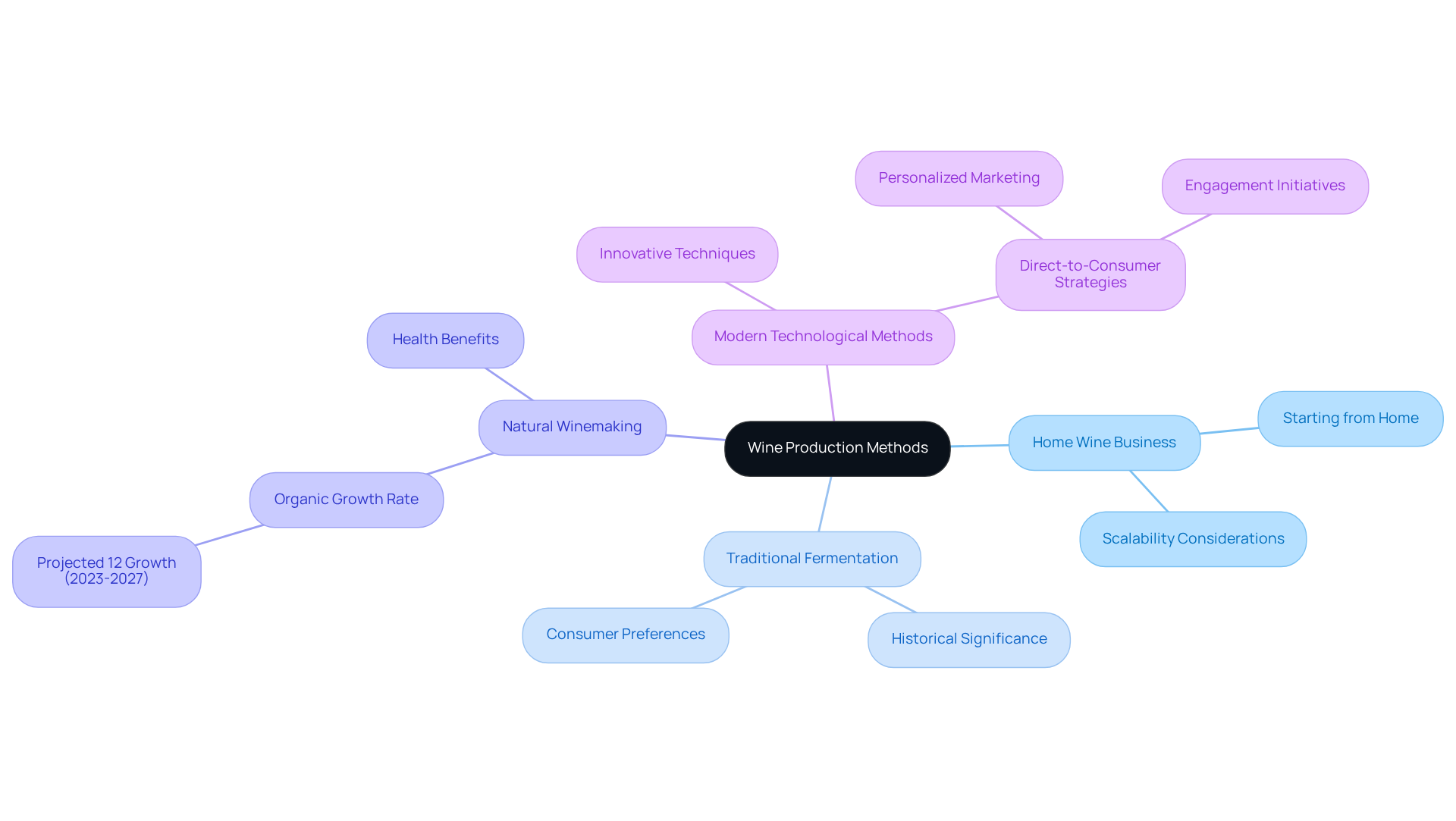
Develop Your Brand and Marketing Strategy
To learn how to , begin by clearly defining your identity, encompassing your mission, values, and unique selling propositions. Craft a compelling narrative that reflects your passion for wine and provides insights on [how to start a wine business from home](https://blog.enocap.com/10-essential-wine-website-templates-for-wineries-to-boost-sales), while resonating with your target audience and highlighting the unique aspects of your winery. This storytelling method not only distinguishes your identity but also nurtures emotional ties with consumers, which is crucial when considering how to start a wine business from home in a crowded market.
To convert casual purchasers into devoted club members, develop a multifaceted marketing plan that incorporates how to start a wine business from home using both online and offline channels. Social media, particularly Instagram, serves as a potent platform for visual storytelling, enabling you to convey your narrative, interact with followers, and discover how to start a wine business from home to boost direct sales. Email marketing proves particularly effective for nurturing relationships and encouraging repeat purchases, which is essential when learning how to start a wine business from home, as it allows you to segment your audience for targeted campaigns. Customized email approaches can significantly enhance engagement and conversion rates.
Consider organizing tastings or events, both in-person and virtual, as part of your strategy on how to start a wine business from home to build community and strengthen customer loyalty. These experiences create memorable interactions that deepen consumer connections and encourage word-of-mouth promotion. Additionally, ensure your website is optimized for e-commerce to learn how to start a wine business from home, facilitating seamless direct sales and providing rich content that narrates your winery's story. Incorporating SEO optimization will enhance user experience and drive organic traffic to your site, especially if you are exploring how to start a wine business from home.
A well-implemented marketing approach that includes genuine storytelling and community involvement will not only establish a robust presence in the competitive beverage market but also provide insights on how to start a wine business from home. As emphasized by experts at Enocap, combining transformative direct-to-consumer strategies with strategic capital planning is essential for maximizing your brand's reach and effectiveness. This approach not only fosters growth but also secures the necessary capital for sustainable development.
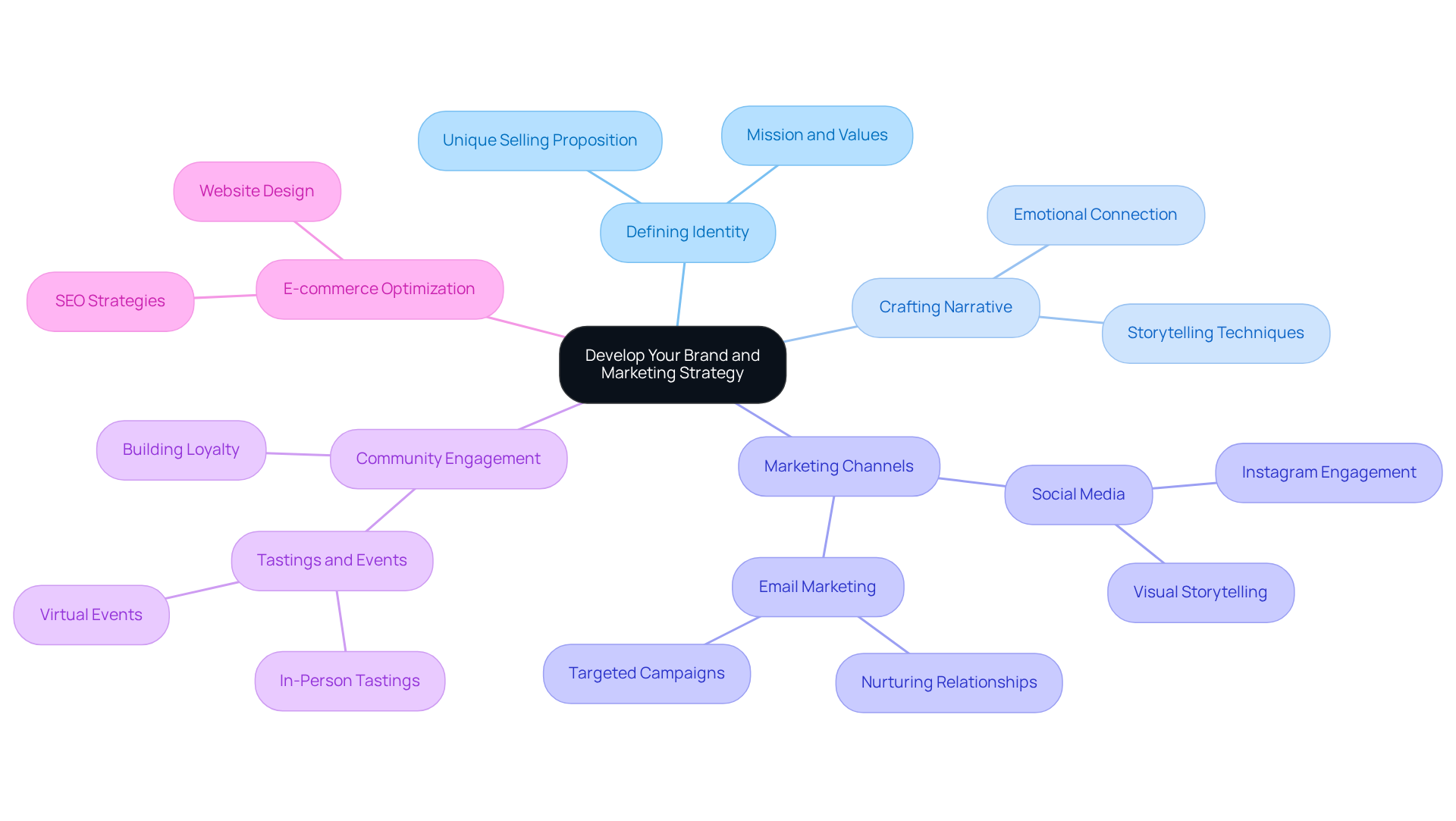
Set Up Sales Channels and Logistics
To successfully launch your beverage business, it is essential to identify the that align with your business model, such as online sales, clubs, or retail partnerships. Establishing a robust e-commerce platform is crucial; it must facilitate seamless transactions and foster customer engagement. Consider platforms tailored for wineries, as they often include features specifically designed for the wine market. Enocap's strategic capital advisory services can further enhance your approach by unlocking direct-to-consumer revenue and helping you craft compelling brand stories that resonate with your audience.
Logistics play a vital role in your operations. Develop a comprehensive plan that encompasses inventory management, shipping, and fulfillment processes. Collaborating with dependable shipping firms is essential to guarantee prompt delivery, and establishing a tracking system for orders can significantly improve clarity and satisfaction. Enocap can assist in strategic capital planning, ensuring you have the resources needed for effective logistics management.
Furthermore, prioritize client support to enhance the buying experience and promote repeat purchases. Personalization is key; 80% of consumers are more likely to buy from brands that offer personalized experiences. By converting casual purchasers into devoted club members through established methods, you can greatly enhance your customer retention.
A well-organized sales and logistics approach is essential for learning how to start a wine business from home while streamlining operations and positioning your venture for sustainable growth in a competitive landscape. Embracing sustainable practices can further resonate with eco-conscious consumers, enhancing your brand's appeal. By leveraging these strategies and Enocap's expertise, you can capitalize on growth opportunities and meet evolving consumer expectations.
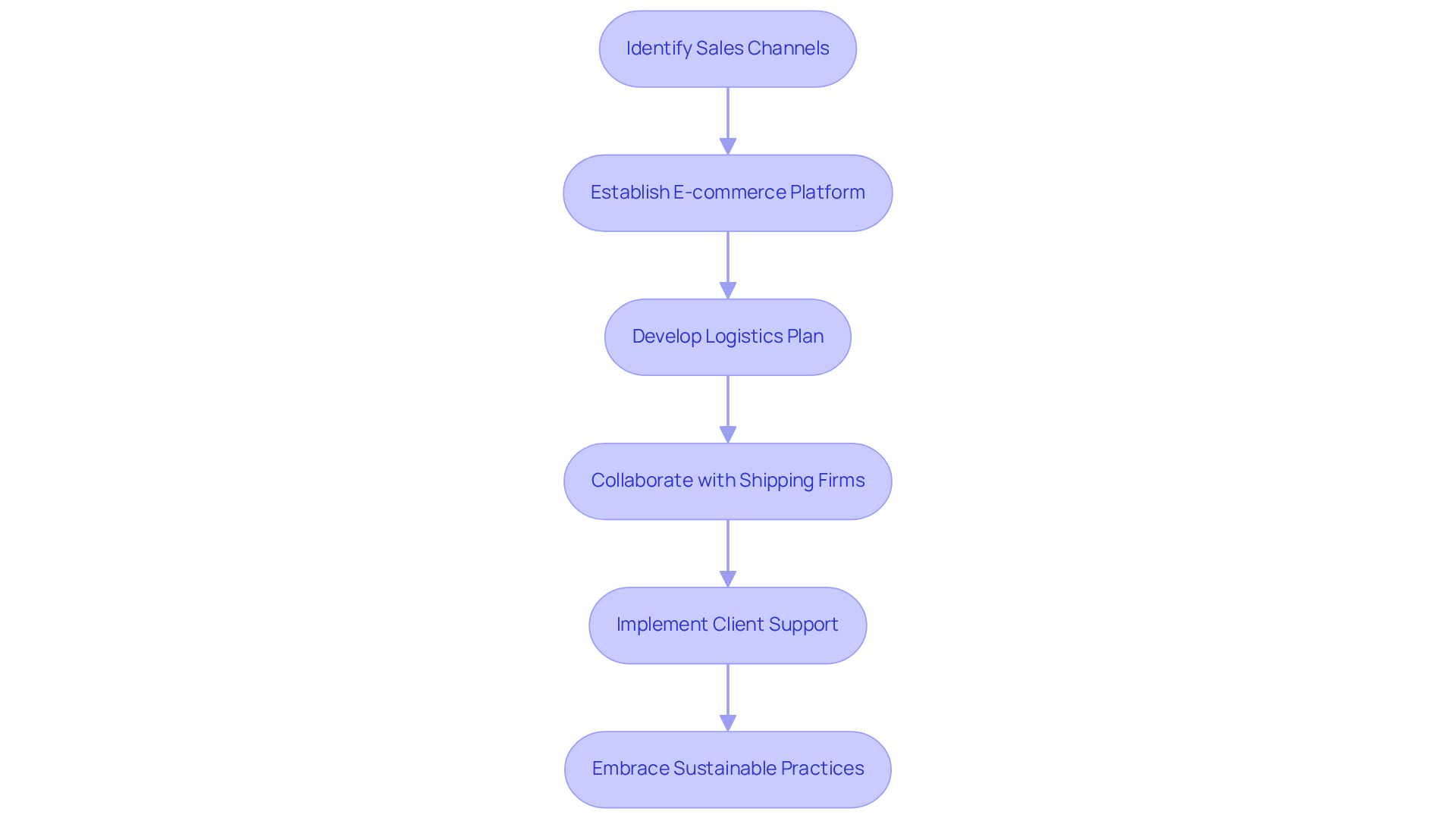
Conclusion
Starting a wine business from home offers an exceptional opportunity for entrepreneurs to engage with a flourishing industry. By thoroughly understanding the wine landscape, establishing a robust business framework, selecting appropriate production methods, developing a distinctive brand, and setting up efficient sales channels, aspiring vintners can successfully carve out their niche in the marketplace. Each of these steps is essential for building a sustainable and prosperous home-based wine venture.
Key insights throughout this article highlight the necessity of adapting to consumer trends, particularly the increasing demand for organic and sustainable wines. The significance of a well-defined business model and marketing strategy cannot be overstated; these elements are pivotal in driving customer engagement and loyalty. Moreover, leveraging modern e-commerce platforms and efficient logistics will enhance the overall customer experience, ensuring smooth operations and fostering repeat business.
Ultimately, embarking on the journey of starting a wine business from home transcends mere beverage production; it involves creating a brand that resonates with consumers and distinguishes itself in a competitive market. By embracing innovative strategies and cultivating authentic connections with customers, entrepreneurs can not only achieve success in their ventures but also contribute positively to the evolving wine industry. Now is the moment to transform passion into profit and embark on this rewarding journey.
Frequently Asked Questions
What is the current landscape of the wine industry?
The wine industry is experiencing a shift towards direct-to-consumer (DTC) sales, with a 2.1% decline in total DTC sales across the U.S. in 2023. There is also an increasing demand for organic and sustainable beverages, reflecting consumer preferences for environmentally friendly products.
Why is understanding the target audience important in the wine industry?
Understanding the target audience is vital due to the demographic transition from Baby Boomers to younger consumers. This knowledge helps in refining product offerings to meet the preferences of the evolving consumer base.
How can wineries adapt to the changing market trends?
Wineries can adapt by establishing sustainable DTC channels, leveraging strategic capital planning, and analyzing successful wineries that have effectively adjusted to market trends. This can help convert casual buyers into dedicated club members and secure long-term growth.
What resources can be used to gather information about the wine industry?
Relevant resources include industry reports, beverage trade publications, and online forums, which can provide crucial information for business planning and development.
What are the first steps to establish a wine business?
The first steps include defining your business model (whether to create your own wine or source it from established vineyards), selecting a legal structure (such as sole proprietorship, partnership, or LLC), registering the business, and securing necessary licenses and permits.
How long does it typically take to see profit from a vineyard?
Starting a vineyard typically requires over five years before seeing a profit, and many vineyard owners maintain another source of revenue during this period.
What operational aspects should be considered when starting a wine business?
Important operational aspects include production methods, quality control measures, and distribution plans, which are essential for running a successful beverage business.
How can Enocap assist in starting a wine business?
Enocap provides advisory services, including demand generation strategies and club optimization, to help navigate foundational steps, drive DTC growth, and enhance brand narratives, ultimately streamlining business processes and addressing cash flow challenges.




